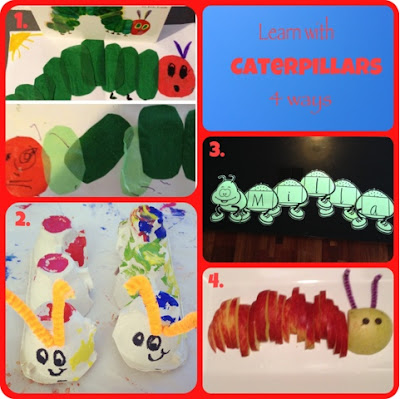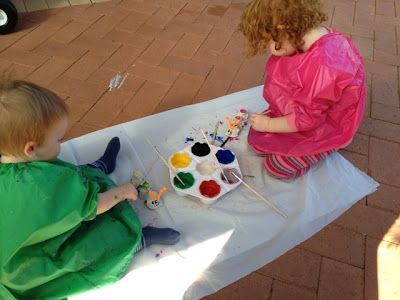Here is a cute little activity we did at Playgroup in the lead up to Easter.
With an awareness of different beliefs and views amongst members we focused on talking about new life and new beginnings.
Suitable Ages: Can be adapted to suit multiple ages
I was unable to get any photos of the children doing this activity as I was hands on the whole time, discussing, asking, answering and assisting the children.
Learning Opportunities
Fine motor skills
Language and Vocabulary
Discovery of the sense of touch
Discussion on Chickens and other animals that hatch from eggs
Role Play
To Prepare
I drew a simple chick shape and photocopied onto white card and cut out
Attach the chicks to pop sticks with tape
Cut out egg shapes from white card
Colour some cotton wool balls.
(this photo was taken after the activity)
I used chalk powder in a bag and shook it with the cotton wool inside.
I've also done it before with powered paint and that works better, especially if you give them a light spray with water from a water bottle, however I didn't have any and the chalk worked ok.
To introduce the activity I filled this surprise bag with the cotton wool balls and I asked the children to put their hand inside and tell me what they could feel. I assured them it was safe and would not hurt them.
We got soft, fluffy and woolly. A few children made a guess of what they thought was inside. I then showed them the cotton wool asked them to tell me some things they knew that felt soft,fluffy or woolly.
I then introduced the cardboard chick and told the children that we were going to use the cotton wool to make our chicks soft and fluffy like a real baby chick.
Have the children glue some cotton wool onto their chick.
After our chicks were all fluffy, we talked about where chicks come from.
EGGS!
Each child was then given a card egg and we did some more gluing and stuck some crepe paper on to colour the egg.
We discussed how the chick got out of the egg.
They hatch
They crack the shell with their beak
I told the children we need to crack our egg so our chick can hatch out
To do this we used scissors to cut a crack in our egg.
Most of the 3yr olds in our group had a go at doing this themselves with safety scissors.
Parents assisted and helped the younger children do this.
Now our chicks are ready to hatch out of their eggs!
I showed the children how to place their chicks behind their eggs and we learnt this little song.
I'm a little Chickie ready to hatch,
pecking at my shell scratch, scratch, scratch.
When I crack it open out I leap,
fluff my feathers with a cheep, cheep, cheep!
Children can act out this song with their chicks and eggs and then they can act it out themselves and pretend to be the chick in an egg, hatching.
To Extend This
Read some books and stories about chicks and chickens.
Talk about other animals that hatch from eggs, ducks, snakes etc.
Play and Learn
Enjoy
Katey
If you enjoyed this post, please feel free to share it and leave your comments. I enjoy reading every one!!























































